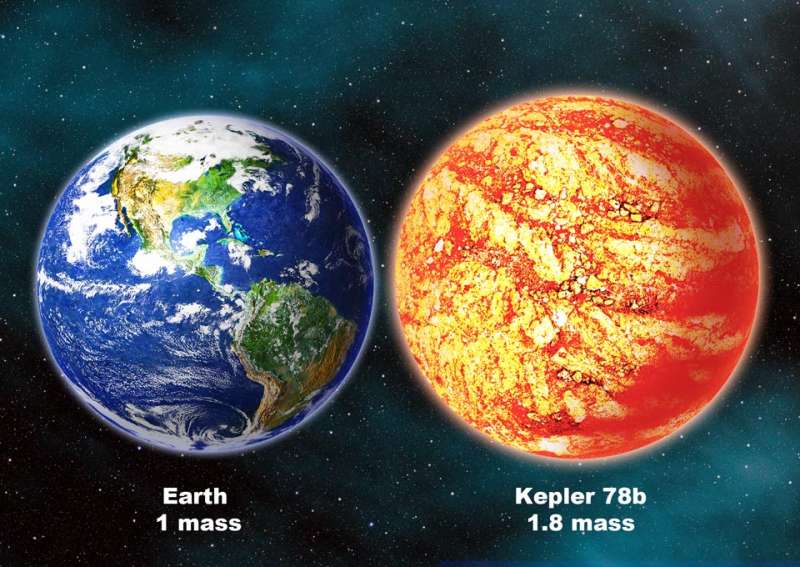Credit & Copyright: David A. Aguilar
(CfA)
Explanation:
Even though Kepler-78b is only slightly larger than the Earth, it should not exist.
Its size is extraordinary only in the sense that it is the most similar in size to
the
Earth of any exoplanet yet directly discovered.
Its orbit, however, is
extraordinary
in the sense that it circles a Sun-like star 40 times closer than
planet Mercury.
At such a scathing distance, even
rock is liquid.
Models of planet formation predict that no planet can form in such a
close orbit, and models of
planet evolution predict that
Kepler-78b's orbit should decay
--
dooming
the planet to eventually merge with its parent star.
Illustrated above
in comparison with the Earth,
Kepler-78b
was discovered by eclipse with the Earth-orbiting
Kepler spacecraft
and further monitored for subtle wobbles by the
HARPS-
North,
a spectrograph attached to the 3.6-meter
Telescopio Nazionale Galileo in the
Canary Islands.
New Estimate:
20%
of Sun-like stars have a habitable Earth-sized planet.
1999 2000 2001 2002 2003 2004 2005 2006 2007 2008 2009 2010 2011 2012 2013 2014 2015 2016 2017 2018 2019 2020 2021 2022 2023 2024 2025 |
Yanvar' Fevral' Mart Aprel' Mai Iyun' Iyul' Avgust Sentyabr' Oktyabr' Noyabr' Dekabr' |
NASA Web Site Statements, Warnings, and Disclaimers
NASA Official: Jay Norris. Specific rights apply.
A service of: LHEA at NASA / GSFC
& Michigan Tech. U.
|
Publikacii s klyuchevymi slovami:
ekzoplaneta - extrasolar planet
Publikacii so slovami: ekzoplaneta - extrasolar planet | |
Sm. takzhe:
Vse publikacii na tu zhe temu >> | |
